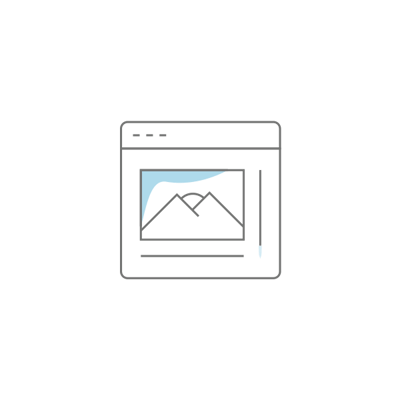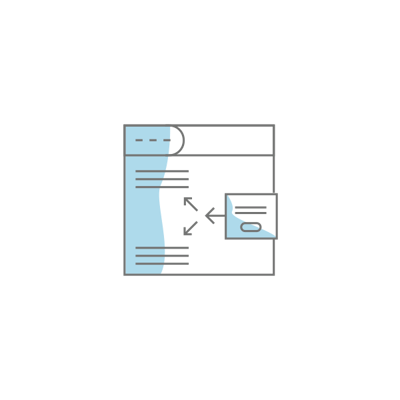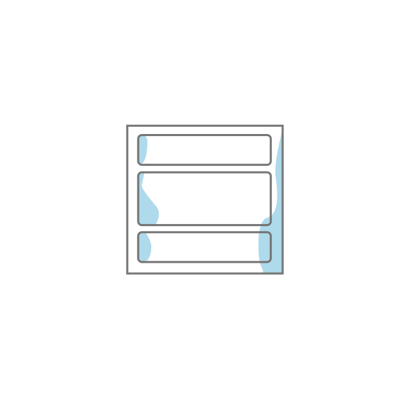
If you're here, you're likely seeking to understand the relationship between content design, website design, and template design in the context of effective website creation.
Content Design focuses on planning, developing, and structuring content that aligns with user needs and business goals. It deals with what the content is, how it is organized, and how it is optimized for search engines and accessibility.
Website Design relates to the visual aesthetics and user experience of the website. It focuses on how the site looks, feels, and functions, making sure it's both visually appealing and easy to use.
Template Design involves creating a ready-to-use webpage framework that organizations can customize with their own content and branding. It establishes a consistent, responsive, and customizable base for the design and layout of web pages.
All three — content design, website design, and template design — are vital components of building an effective website, each with its specific focus and role in the overall process. In the end, it's all about creating a balance between the content (what you're saying), the website design (how it looks and feels), and the template (how it's structured and functions).
The business of website creation is diverse, with different experts specializing in various parts. Among these, content design, website design, and template design are fundamental. While they often overlap, each has its unique focus and role in the website design process.

Content design involves planning, creating, and arranging your content (text, images, videos, infographics, and more) in a way that aligns with your user's needs and your business goals. Here's a breakdown of what it might involve:
1. Identifying User Needs: Research to understand what your audience is looking for when they land on your website.
2. Content Structuring: Think of this as arranging your content in a logical flow that makes it easy for your audience to find what they need. Learn to love white space and keep it simple, smarty.
3. Accessibility: Ensure your content can be consumed by all website visitors, including those with disabilities.
In essence, content design is about shaping content that fits both your audience's expectations and your business objectives.

The look, feel, and functionality of your website. This is where your website's visual aesthetics and usability come into play. This typically entails:
1. User Interface (UI) Design: This involves creating an appealing and user-friendly layout with an appropriate colour scheme, typography, and interactive elements.
2. User Experience (UX) Design: This focuses on providing a smooth, intuitive, and enjoyable experience for your audience.
3. Responsive Design: This ensures your website adapts to different devices, maintaining a consistent user experience whether your audience is on a desktop device or mobile.
4. Navigation Design: This creates a logical flow that makes it easy for users to move around your site. Navigation is not limited to Menus. Navigation incorporates the positioning of content, links, and imagery.
5. Graphic Design: This is where visual elements like logos, icons, and images come into play.
In short, website design focuses on making your site visually attractive and easy to navigate, promoting a positive user experience.

Finally, let's touch on template design. This is a subset of website design where you're creating a ready-to-use framework for your web pages. A template (or set of templates) provides a pre-designed structure that you can fill with your content, saving time and cost, and promoting consistency across your website. Core template design considerations include:
1. Layout and Structure: This is about designing the basic framework of the webpage, including where to place headers, footers, content blocks, and navigation elements. An advanced template will take visitor intent into consideration.
2. Styling: This sets the base typography, colour scheme, and other stylistic elements that will remain consistent across your website. A professional template will incorporate your branding elements so you don't need to reproduce them on every page.
3. Responsiveness: Just like in website design, your template and content modules should automatically adjust to fit the screen size and resolution of the device it's viewed on.
4. Customizability: Your template should offer room for customization to fit the unique needs and branding of your organization and unique page/communication requirements.
5. Code Quality: Good template design involves writing clean, efficient, and accessible code. This ensures that the template and modules work well and help with SEO and usability, and are well-documented.
In essence, template design creates a customizable, reusable base for your web pages, ensuring consistency and ease of use. Often this leads to both significant cost savings and shortens the time to market/launch.
Now you understand that content design, website design, and template design, while interconnected, each plays a unique role in creating an effective website. Whether you're designing a blog, an e-commerce site, or a corporate web page, you'll need to consider all three areas.
Consider using the DropZone Pro Theme for Hubspot CMS. If it’s time to maximize your HubSpot ROI, DropZone Pro Theme comes with expert support today and in the future. Safe. Smart. Solid.